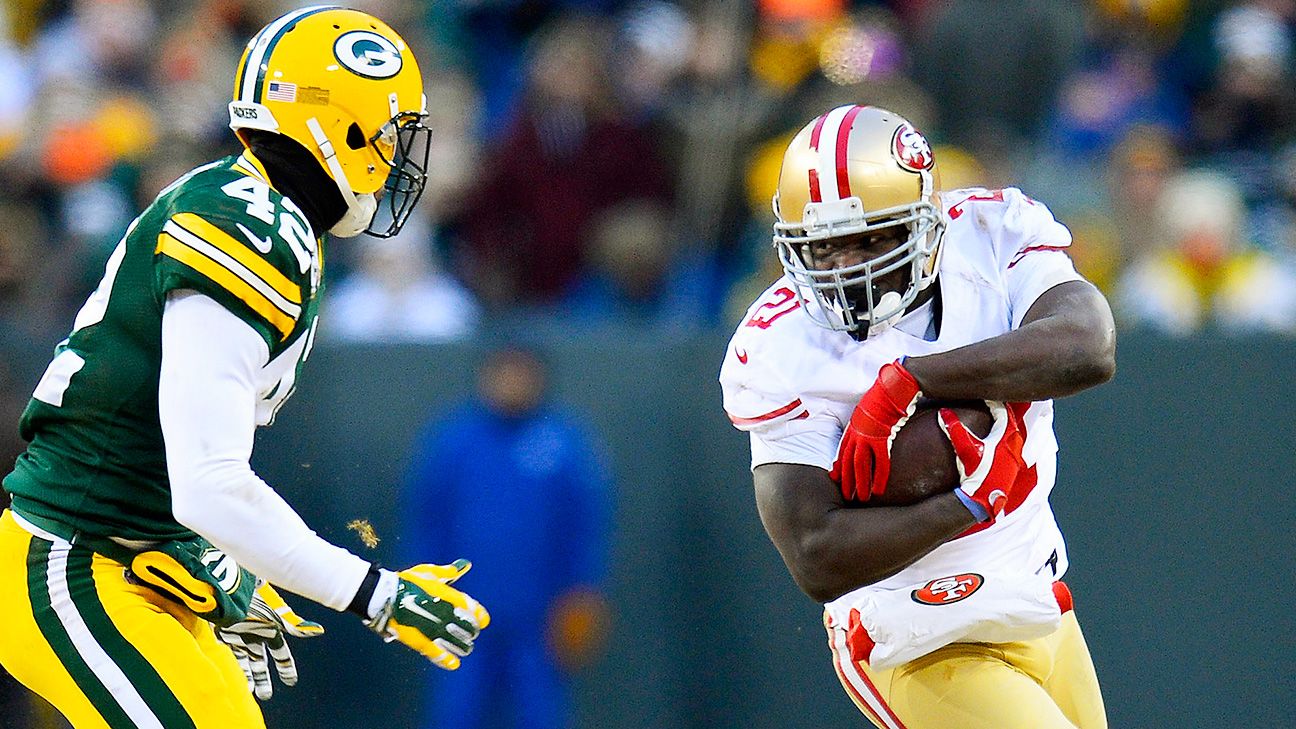Running back Frank Gore Signed a one-day contract With the San Francisco 49ersHis NFL career ended in 2005, when he was the third-round pick (65th overall).
Gore was last seen Dec. 27, 2020 when he ran for 48 yards on 14 carries. New York Jets23-16 victory over Cleveland Browns. These 48 rushing yard gave Gore approximately 16,000 total rushing yards over a 16 year playing career with five different clubs.
Gore now ranks No. He is currently No. 3 all-time in rushing. The quick-hit portions of his potential Hall of Fame résumé include his selection as one of four running backs on the All-Decade team of the 2010s and five Pro Bowls.
The phrase “next stop Canton”, which refers to Gore’s career, will be used whenever he or she mentions it. It is my belief that Gore will be inscribed as a member of the Pro Football Hall of Fame voters.
The real question here is: Will Gore make it into the first-ballot Hall of Fame? It all depends on the other 15 finalists. Gore and wide receiver Larry Fitzgerald won’t be able to make a comeback if they are not selected for the Hall of Fame Class of 2026. Gore’s clock began with his last season, not his retirement announcement.
Start with the most expensive items. The Hall of Fame is already home to 16 of the most successful NFL rushers, who are eligible for Hall of Fame eligibility. There are Nos. 19 (John Riggins), 21 (O.J. Simpson) and 34(Joe Perry), are also enshrined.
Gore and others are the only two remaining obstacles among the top 16 that aren’t enshrined. Adrian PetersonPeterson is still a free agent. Peterson, for his part was one of four offensive players who were unanimously selected on the 2010s All-Decade Team (Tom Brady, Joe Thomas Marshal Yanda was the other.
Peterson could be ineligible for the Hall of Fame starting in 2027 if he does not play any more games.
If Gore doesn’t make it as a first-time eligible player and he and Peterson appear on the Hall of Fame ballot at the same time, there is always the prospect – and a common one at that – they split votes. This has happened many times through the years at a variety of positions, especially at wide receiver – the Tim Brown, Andre Reed, Terrell Owens gridlock was one of the most recent examples.
All three were eventually enshrined. Reed was a finalist 8 times, Brown was finalist 6 times, and Owens was finalist 3 times.
Two running backs were inducted into the Hall of Fame in 2017 by Terrell Davis, a three-time finalist, and LaDainian Thomaslinson. This hadn’t been done since 1994.
• McCaffrey all in on Faulk’s health advice
• Bradberry finds fit with Eagles
• Giants defense ready to be aggressive
• Inside Jets’ head-turning offseason
• How Parcells prepped Bills rookie Kaiir Elam
The all-time list of rushing champions is likely to be a far better indicator of Hall of Fame eligibility than, for example, the all-time passers list, which changes every month. This league doesn’t like running backs and no one is likely to break the 12,000-yard barrier anytime soon.
Tomlinson is the only runningback, apart from Peterson and Gore who has played in a league game since 2005. Only four of the 16 top all-time rushers have played in a game since the 2009 season.
Hall of Fame discussions are filled with emotion, because the math is so simple. Every team in the league has, at minimum, four players who are not enshrined who each of those teams consider a slam-dunk, no-brainer, it’s-a-travesty-he’s-not-in player.
That’s 32 teams multiplied by four — 128 players — with, count ‘em, a maximum of five modern era slots for the Hall class each year. Even if new players were not added each year, it would still take 25.6years to handle that group.
Social media is abuzz with angst over the Hall. This includes those who are waiting or can’t make it to the final list.
The gold jacket for John Elway is the same as the one for Floyd Little, who waited nearly four decades to have his last game enshrined. They use the same bronze to bust Hall of Famer candidates in their first year of eligibility.
Here are some examples of players who have been enshrined over the years, but were not selected for their first year of eligibility: Joe Namath and Willie Lanier; Alan Page, John Mackey, Ozzie Newsome; Joe Namath and Willie Davis.
Gore’s case to the Hall is consistent, top-shelf production. Gore is a medical wonder, having suffered two ACL injuries in college and then becoming one of the most reliable players in the league for nearly two decades. If the argument gets heated in years to come, many will claim that Gore was one of the league’s top rushers in just one season and never had the chance to play with a Super Bowl winner.
All of this is to come five years hence. Gore has much to be proud of today, after 241 regular season games, nine 1,000 yard seasons, and eleven 900 yard seasons. This was a rare career for a rare player, and it was time to say goodbye to the place where it all began.
